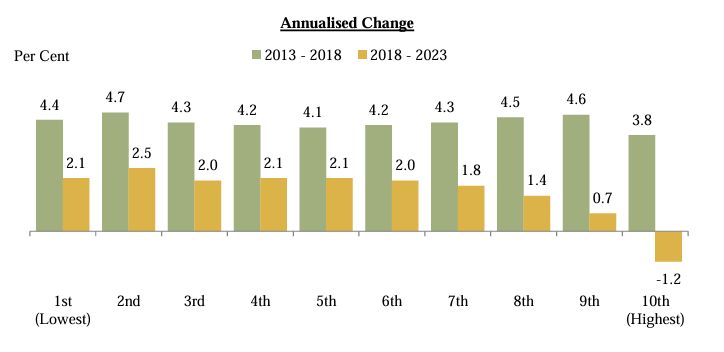Ever checked your pay slip and wished for a higher number? Well, for many Singaporean families, that wish came true in 2023. The median household income from work shot up to S$10,869, marking a welcome 7.6% increase in nominal terms or 2.8% in real terms.
What does this mean for you and your family? Let’s break it down.
Household Income is More Than Just Numbers

Source: iStock
A resident employed household in Singapore refers to a household where the reference person is either a Singapore citizen or a permanent resident (PR), and where at least one member is gainfully employed.
When considering the size of the household, the median monthly household income from work per household member also witnessed an upward trajectory.
It rose from S$3,287 in 2022 to S$3,500 in 2023, reflecting an increase of 6.5% in nominal terms or 1.7% in real terms.
Insights from Singstat’s Household Income Report
The Singapore Department of Statistics (Singstat) has been keeping tabs on these numbers.

Source: Singstat
According to their report, the median monthly household income from work increased cumulatively by 3.1% or 0.6% per annum in real terms from 2018 to 2023.
Per household member, this change was even more significant, with a cumulative increase of 10.5% or 2% per annum in real terms over the same period.
Not All Roses

Source: Singstat
But it’s not all sunshine and roses. Not all households experienced an increase in their income.
While most households saw their median income rise by 0.9 to 2.0% in real terms per household member, the lowest, second highest, and highest deciles recorded a decline instead.
Moreover, households in the top decile witnessed a decline of 1.2% per annum in real income over the same period.

Source: Singstat
Income Inequality Takes a Dip
Here’s some good news — income inequality in Singapore, measured by the Gini coefficient, fell from 0.437 in 2022 to 0.433 in 2023. With government transfers and taxes factored in, it dropped even further to 0.371.
Government Transfers Boost Income
In 2023, each household member received an average of S$6,371 in government transfers, representing a notable increase from the previous year’s average of S$5,859.
Furthermore, this rise is attributed to the enhanced support measures rolled out in 2023 to cushion the impact of high inflation and an increase in the goods and services tax (GST) rate.
Notably, households living in Housing and Development Board (HDB) one- and two-room flats received the highest government transfers, with each household member receiving an average of S$13,623 in 2023.
A Brighter Future?

Source: iStock
These figures paint a promising picture for Singapore’s economy. But what does it mean for your family? And how can we ensure that this growth is inclusive for all?
The increase in Singapore’s household income and the decrease in income inequality are positive signs for the economy. However, it’s essential to continue addressing income disparities to ensure inclusive growth.
As we navigate these economic trends, it’s crucial to stay informed and engaged.
ALSO READ
Singapore’s Economic Outlook for 2024
Salary Increments and Pay Raises in Singapore – How Much to Expect in 2024 and the Near Future
How Much Do You Need To Earn Per Month To Buy A Condo in Singapore?